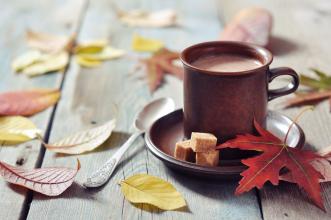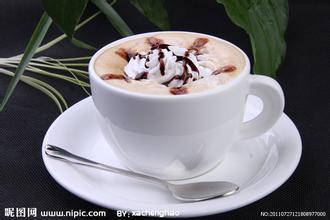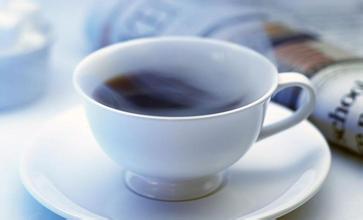Introduction to Xuemai Manor, Flavor Manor in Bolivian Coffee producing area
Rich in mineral resources, mainly tin, antimony, tungsten, silver, zinc, lead, copper, nickel, iron, gold and so on. Mineral deposits are rich, with tin reserves of 1.15 million tons, ranking second in the world; iron reserves of 45 billion tons, second only to Brazil in Latin America; and lithium reserves of 100 million tons, ranking first in the world. [7]
Petroleum and natural gas
Bolivia is rich in oil and gas resources. Proven oil reserves are 929 million barrels and proven natural gas reserves are 52.3 trillion cubic feet as of 2013.
Forestry
Rich in resources, the forest covers an area of 530000 square kilometers (53 million hectares). The main wood varieties are: mahogany, red juniper, American oak,
Native species-Bolivian tiger cat
Native species-Bolivian tiger cat
Sandbox wood, heavy ant wood, Yibei and Longfeng plant.
Bolivia is a landlocked country, with only 14197 square kilometers of water and 24201 square kilometers of pond area, fishery resources are relatively poor, only produce freshwater fish, mainly: River trout, silver fish and so on. [7]
Other resources
Bolivia is rich in hydropower resources, with a potential developable hydropower installed capacity of 39850 megawatts, with a developed installed capacity of 480 megawatts by 2013, with a degree of development of only 1.2%, with great potential for hydropower development. Bolivia is also rich in wind and solar energy resources, with a maximum wind speed of 16 meters and 7 seconds in La Paz. [7]
The total population is 10.624 million. The urban population is 6.574 million, accounting for 65% of the total population, and the rural population is 3.454 million, accounting for 35% of the total population.
Bolivia is a multi-ethnic country with mainly indigenous peoples, including Indians of all ethnic groups; Mestizo: European and African immigrants and indigenous peoples
Bolivians in the market
Bolivians in the market
Mixed-race offspring (about 30% of the Bolivian population) and European and African immigrants (about 15% of the total population). According to statistics, there are 37 indigenous communities in Bolivia, of which Quechua and Ayimala have the largest population, 1.558 million and 1.279 million respectively, and Guaran 78000. [7]
National symbol editor
Name of country
The Plurinational State of Bolivia (English: The Plurinational States of Bolivia; Spanish: El Estado Plurinacional de Bolivia) is short for Bolivia, named after Simon Bolivar, the outstanding leader of the American War of Independence. [8]
National flag
The Bolivian flag was used on October 31st, 1851. the flag is rectangular and the ratio of length to width is 3:2. From top to bottom, the flag is composed of three parallel rectangles of red, yellow and green, with the national emblem painted in the middle. It turns out that red symbolizes sacrifice for the country, yellow symbolizes hope, and green symbolizes sacred land. Now it is divided.
Bolivian flag
Bolivian flag
Don't represent animals, minerals and plants. The national flag with the national emblem is used for formal occasions, and the national flag without the national emblem is used for general occasions. [5]
National emblem
The middle of the Bolivian national emblem is oval.
There are patterns of sun, mountain peak, bread tree, camel sheep and grain on the round surface. There are ten five-pointed stars in the lower half of the circle, representing the nine provinces that make up Bolivia and the coastal provinces seized by Chile; the top half is written "Bolivia" in Spanish. Three national flags are hung on each side of the oval; behind them are crossed sticks and weapons, symbolizing authority; and on the left, there is a "cap of freedom" at the top of the bar. At the top of the oval is a large vulture called the Condor, symbolizing strength and freedom. The eagle is decorated with laurel twigs and olive branches, representing the pride of the country's people in national freedom and their desire to live in harmony with the people of other countries.
Lake Titicaca is located on the Coaya Plateau on the border between Bolivia and Peru. It is the highest and largest freshwater lake in South America, one of the highest freshwater lakes in the world, and the highest navigable lake in the world. it is the third largest lake in South America (after Lake Maracaibo and Patus lagoon) to wash Bolivia with a cup of water. It is recommended to wash Bolivia with a water temperature of 87 degrees with 15g powder. Gouache ratio 1:15, moderate grinding (small Fuji ghost tooth cutter 3.54grinding), V60 filter cup, the first injection of 30g water for 25s, injection to 110g water cut off, wait for powder bed water to half, then water injection, slow injection until 230g water volume, tail section not, extraction time 2virtual 00s.
Flavor: dry aromas of roasted nuts and almonds, soft acidity of oranges and white pomelos on the palate, sweet caramel on the whole, smooth texture of nut milk, cleanliness and balance are also quite eye-catching. The herbal aroma of the aftertaste is also fascinating. The advantage of Bolivian coffee lies in high altitude and excellent coffee varieties. Here the traditional Tibica and a small amount of Kaddura are highly valued in the world market. In the past, coffee trees in Bolivia used to act as hedges and ornaments around the garden. Real commercial production began in the early 1950s. The coffee industry in Brazil was badly damaged by the great frost in 1957, while Bolivia (Bolivia) benefited and developed rapidly. Bolivian coffee is grown at an altitude of 18000 to 2670 meters above sea level, and the Arabian washed coffee beans are exported to Germany and Sweden. They are not the best in taste today and have a bitter taste.

Important Notice :
前街咖啡 FrontStreet Coffee has moved to new addredd:
FrontStreet Coffee Address: 315,Donghua East Road,GuangZhou
Tel:020 38364473
- Prev

Pleasant aroma of Costa Rica Fire Phoenix Manor Coffee Flavor taste the characteristics of the manor area boutique coffee
There are many kinds of coffee here, but its industrial policy is large and cheap, so there is not much premium coffee, but it is a good choice for mixing other coffees. One of the most famous is Mountain Costa Rica Coffee, which tastes mellow and neutral. It can be boiled directly or mixed with other kinds of coffee beans to form a mixed coffee. It is also a good choice. Other kinds of Brazil
- Next

Full-bodied and refreshing taste of Tanzanian coffee manor introduction to Arusha Coffee Manor
Tanzania coffee beans are absolutely comparable to neighboring Kenya, but the quality of coffee in the country is not strictly controlled, and carelessness in many processes often destroys the quality of coffee (such as transportation). Good quality Tanzanian coffee beans are divided into AA and A grade the raw beans of this Tanzanian AA coffee bean look neat and have a delightful light green. Baked Tanzania AA
Related
- Does Rose Summer choose Blue, Green or Red? Detailed explanation of Rose Summer Coffee plots and Classification in Panamanian Jade Manor
- What is the difference between the origin, producing area, processing plant, cooperative and manor of coffee beans?
- How fine does the espresso powder fit? how to grind the espresso?
- Sca coffee roasting degree color card coffee roasting degree 8 roasting color values what do you mean?
- The practice of lattes: how to make lattes at home
- Introduction to Indonesian Fine Coffee beans-- Java Coffee producing area of Indonesian Arabica Coffee
- How much will the flavor of light and medium roasted rose summer be expressed? What baking level is rose summer suitable for?
- Introduction to the characteristics of washing, sun-drying or wet-planing coffee commonly used in Mantenin, Indonesia
- Price characteristics of Arabica Coffee Bean Starbucks introduction to Manning Coffee Bean Taste producing area Variety Manor
- What is the authentic Yega flavor? What are the flavor characteristics of the really excellent Yejasuffi coffee beans?

